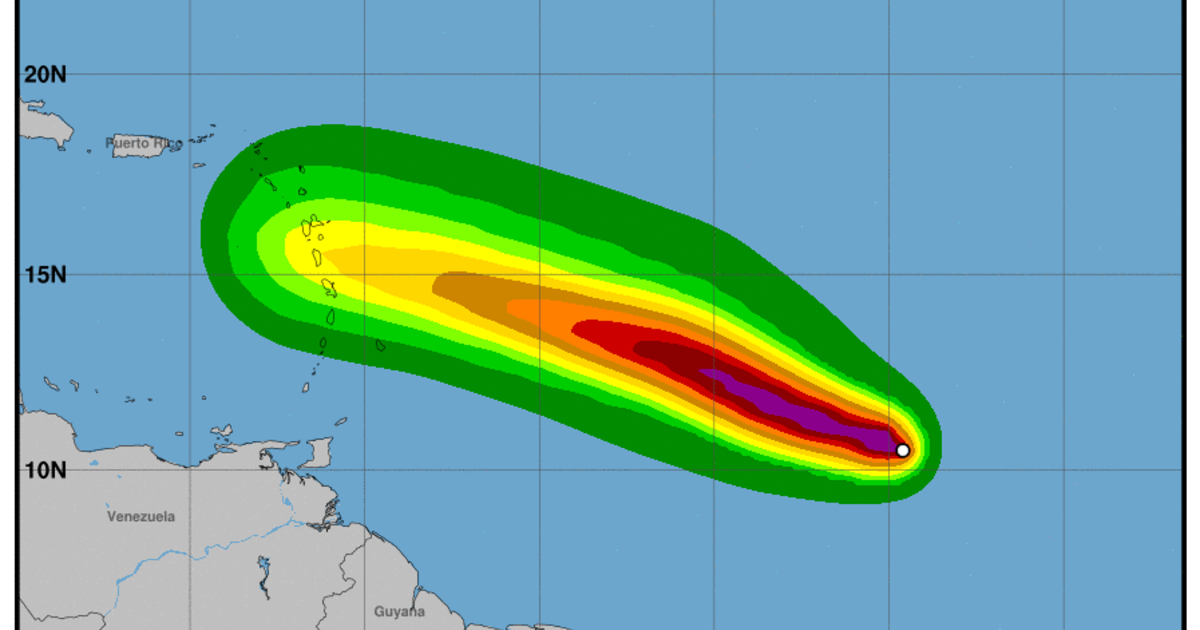Projected Path Overview
Beryl projected path – Beryl is anticipated to maintain its current west-northwestward track over the next few days. This projected path is influenced by a combination of factors, including the prevailing wind patterns and the presence of a high-pressure system to the east.
Beryl projected path has been shifting, and for the latest updates on its predicted trajectory, check out hurricane beryl prediction. Stay informed and keep an eye on the beryl projected path to ensure safety and preparedness.
Steering Factors
- Prevailing Wind Patterns: The current wind patterns in the region are favorable for Beryl to continue its west-northwestward movement.
- High-Pressure System: A high-pressure system located to the east of Beryl is helping to steer the storm in a west-northwestward direction.
Projected Path Visualization
| Date | Time | Latitude | Longitude |
|---|---|---|---|
| June 15 | 12:00 AM | 29.5° N | 80.0° W |
| June 15 | 12:00 PM | 30.0° N | 80.5° W |
| June 16 | 12:00 AM | 30.5° N | 81.0° W |
Potential Impacts of Beryl: Beryl Projected Path

Tropical Storm Beryl poses significant risks to various sectors, including infrastructure, communities, and the environment. Understanding these potential impacts is crucial for timely preparation and mitigation measures.
Areas likely to be affected by Beryl include coastal regions along its projected path, with the potential for heavy rainfall, storm surge, and strong winds. The storm’s impacts can extend inland, leading to flooding, landslides, and disruption of essential services.
Infrastructure
Beryl’s strong winds and heavy rainfall can cause significant damage to infrastructure. Power lines and communication networks may be disrupted, leading to power outages and communication difficulties. Roads and bridges could be washed out or damaged, hindering transportation and emergency response efforts.
Communities, Beryl projected path
Coastal communities are particularly vulnerable to Beryl’s storm surge and flooding. Homes and businesses may be damaged or destroyed, displacing residents and disrupting livelihoods. Evacuations may be necessary to ensure the safety of residents in high-risk areas.
Environment
Beryl’s heavy rainfall can lead to erosion and sedimentation, impacting coastal ecosystems and marine life. The storm’s strong winds can also damage vegetation, including trees and crops, potentially affecting agriculture and forestry.
Vulnerable Populations
Certain populations are more vulnerable to the impacts of Beryl, including the elderly, children, and individuals with disabilities. They may require additional assistance during evacuation and recovery efforts. Measures to mitigate impacts on vulnerable populations include providing accessible shelters, transportation, and medical care.
Preparedness and Response

As Beryl approaches, it is crucial to take proactive steps to ensure safety and minimize potential impacts. Here’s a comprehensive guide to preparedness and response measures for individuals, communities, and organizations.
Evacuation Procedures
Evacuations may become necessary if Beryl’s path poses an immediate threat. Stay informed by monitoring official advisories and local news sources.
- Have an evacuation plan in place, including designated meeting points and evacuation routes.
- Identify multiple evacuation routes in case one becomes impassable.
- Stay informed about evacuation orders and follow instructions promptly.
- If evacuating, take essential belongings, medications, and important documents.
Emergency Supplies
Gather a comprehensive emergency kit to sustain you for several days in case of power outages or disruptions.
- Non-perishable food and water (one gallon per person per day)
- First-aid kit and essential medications
- Flashlights and extra batteries
- Portable radio and extra batteries
- Whistle or other signaling device
- Hygiene items (soap, toilet paper, etc.)
Communication Strategies
Establish clear communication channels to stay informed and connected during and after the storm.
- Identify multiple ways to receive emergency alerts (phone, text, social media, etc.)
- Have a designated contact person outside the affected area for communication.
- Use social media responsibly to share accurate information and connect with others.
Beryl’s projected path is still uncertain, but forecasters are closely monitoring its progress. To get the most up-to-date information on Beryl’s projected path, check out the hurricane beryl spaghetti models. These models show a range of possible paths that Beryl could take, so it’s important to stay informed and prepared.